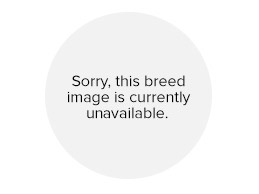Breed standards
German Hunting Terrier
Breed standards are the official guidelines that describe the ideal characteristics, temperament, and appearance of a breed and ensures that the breed is fit for function with soundness essential.

After the first world war a group of active hunters separated from the numerically strong Fox Terrier Club. It was their aim to create a breed, the sole purpose of which would be hunting performance. The experiences hunters and cynologists Rudolf Frieb, Walter Zangenberg and Carl-Erich Grunewald decided to select a black and tan hunting dog in particular suitable for the hunt under the ground. A coincidence came in support of their efforts. A zoo director, Lutz Heck/ Hagenberg presented Walter Zangenberg with four black and tan terriers which were said to come from pure-bred Fox Terrier lines. These dogs became the foundation stock of the German Hunting Terrier. At the time Dr Herbert Lackner joined the founders. After many years of intensive breeding efforts, and through skilful crossings with the Old English Wirehaired Terrier as well as the Welsh Terrier, they succeeded to fix the appearance of their breed. At the same time they put great emphasis on breeding a multitalented, well trainable, hard, tongue giving and water happy dog with an explicit hunting instinct. The German Hunting Terrier Club (Deutscher Jadgterrier-Club e.V.) was founded in 1926. As ever, the breeders continued to value most carefully their breed for its usefulness as a hunting dog, its steadiness of character, its courage and drive.
A smallish, generally black and tan, compact,well proportioned working hunting dog.
Important proportions: Proportion of chest circumference to height at the withers: The circumference of the chest is 10 to 12 cm more than the height at the withers.
Body length to height at the withers: The body is significantly longer than the height at the withers.
Depth of chest to height at the withers: About 55-60% of the height at the withers.
A versatile hunting dog, suited in particular for the hunt under the ground and as a flushing dog.
Courageous and hard, takes pleasure in work, enduring, vital, full of temperament, reliable, sociable and trainable, neither shy or aggressive.
Head: The head is elongated, slightly wedge shaped, not pointed, the muzzle slightly shorter than the skull from occiput to stop.
Skull: The skull is flat, broad between the ears, narrower between the eyes.
Stop: Slightly marked.
Nose: In harmony with the muzzle, neither too narrow nor too small, not cleft. Always black, but when colour of the coat is dominantly brown, a brown nose is also permitted.
Muzzle: Strong, pronounced jaw-muscles and distinct lower jaw, slightly pronounced chin.
Cheeks: Well pronounced.
Lips: Tight and well pigmented.
Dark, small, oval, deep; the eyelids are tight. Resolute expression.
Set high, not explicitly small, V-shaped; slightly touching semi-drop ears.
Big teeth. Strong jaws with a perfect, regular and complete scissor bite, whereby the row of upper incisors, without gap, perfectly locks over the lower incisors, and with teeth standing vertically to the jaws. 42 teeth in accordance with the teeth formula.
Strong, not too long, well put on and blending strongly into the shoulders.
Seen from the front the forelegs are straight and parallel, viewed from the side they are placed well under the body. The distance from the surface to the elbows is approximately equal to the distance from the elbows to the withers.
Shoulders: The shoulder-blade lies well oblique and backwards; it is long and strongly muscled. There is good angulation between the shoulder blade and the upper arm.
Upper arm: As long as possible, well and dry muscled.
Elbows: Close to the body, neither turned inward nor outward. Good angulation between the upper arm and forearm.
Forearm: Dry, straight and upright with strong bones.
Pastern joint: Strong
Pastern: Slightly angulated to the ground, bones rather strong than fine.
Topline: Straight.
Withers: Well defined.
Back: Strong, straight, not too short.
Loin: Well muscled.
Croup: Well muscled and flat.
Chest: Deep, ribs well sprung, not too broad, long breastbone with ribs well reaching backwards.
Underline: Elegantly curved backwards; short and firm flanks, belly slightly drawn up.
Skin: Thick, tight, without folds.
Viewed from behind, straight and parallel. Good angulation between upper thigh and lower thigh and also at the hocks. Strong bones.
Upper thigh: Long, broad and muscular.
Stifle: Strong with good angulation between upper and lower thigh.
Lower thigh: Long, muscular and sinewy.
Hock joint: Strong and placed low.
Hocks: Short and vertical.
Forefeet: Often broader than the hind feet, the well closed toes lying close to each other with sufficiently thick, hard, resistant and well pigmented pads. They are parallel in stance as well as in movement neither turned inward nor outward.
Hindfeet: Oval to round, the well closed toes, with sufficiently thick, hard, resistant and well pigmented pads. They are parallel in stance and in movement neither turned inward nor outward.
Well set to the long croup, docked for around 1/3. Is rather carried slightly raised than steeply erected, but should never incline over the back. (In countries where tail docking is prohibited by law, it can be left in its natural state. It should be carried horizontally or slightly sabre-formed.
Ample ground covering, free, with good reach in the front and powerful drive from the rear. In front and hindquarters parallel and straight, never stilted.
Plain, dense; hard rough hair or coarse smooth hair.
The colour is black, dark brown or greyish black, with fawn(yellow-red) clearly defined markings at the eyebrows, muzzle, chest, the legs and at the base of the tail. Light and dark mask is equally permitted: small white markings on chest and toes are tolerated.
Height at the withers:
Dogs - 33 to 40 cms
Bitches - 33 to 40 cms
Weight:
Weight in males and females should be according to build, not too light nor too heavy.
Any departure from the foregoing points should be considered a fault and the seriousness with which the fault should be regarded should be in exact proportion to its degree and its effect upon the health and welfare of the dog and its ability to perform its traditional work.
Missing of one or both M3 (Molars) is not to be considered a fault.
SERIOUS FAULTS:
Narrow skull, narrow and also pointed muzzle.
Falling away under jaw, narrow jaws.
Weak bite, any slight irregularity in the placing of the incisors.
Light or spotted nose.
Light, too big or protruding eyes.
Erected, flying, too small, set too low or heavy ears.
Steep forequarters.
Soft or roached back, too short back.
Short breastbone.
Too narrow or too wide in front.
Steep hindquarters, overbuilt.
Elbows clearly turned in or out.
Too close or spread toes; cow hocked, bow legged or narrow hocks, in stance as well as in movement.
Ambling, stilted or tripping gait.
Splayed feet, cat feet, hare feet.
Tail inclining over the back, tail set too low or hanging.
Short, woolly, open or thin hair, bald at the belly or at the inner sides of the thighs.
DISQUALIFYING FAULTS:
Aggressive or overly shy
Weak in temperament and character, shot or game shy.
Over and undershot bite, wry mouth, pincer and partial pincer bite, cross-bite, irregulary placed teeth in the upper and/or lower row of teeth, missing teeth except for M3.
Incorrect pigmentation.
Entropion and. Ectropion, eyes of different colour, blue or spotted eyes.
Any departure of the described coat colour.
Over or under size.
Any dog clearly showing physical or behavioural abnormalities shall be disqualified.
N.B. Male animals must have two apparently normal testicles fully descended into the scrotum.

